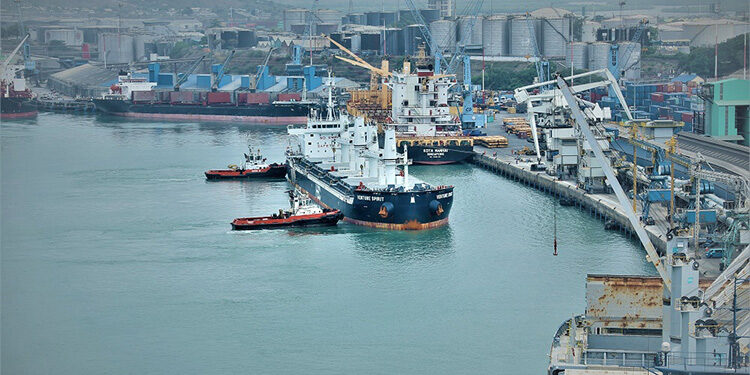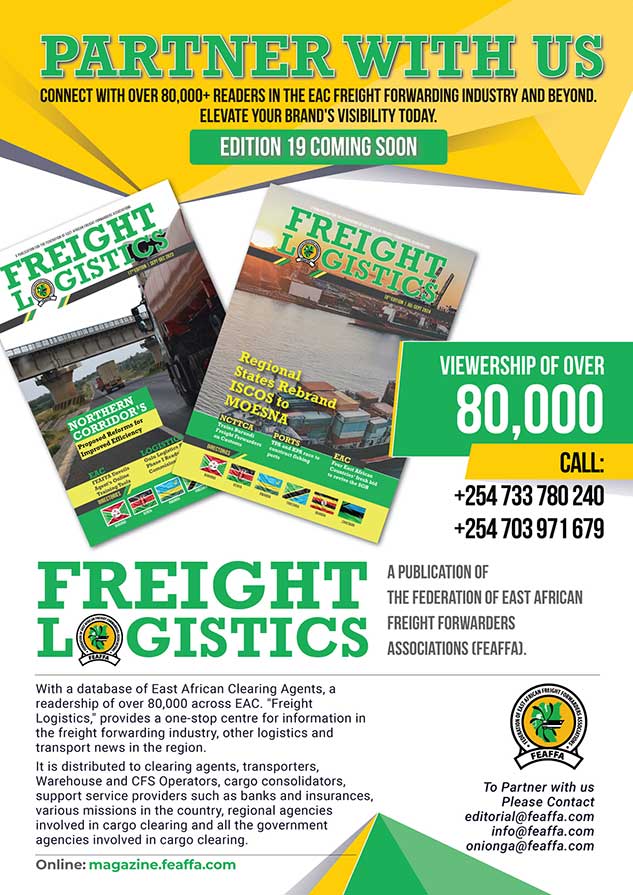The construction of a fish landing harbour in Kilwa Masoko on the Indian Ocean coastline in the Lindi region, which has reached 42 percent completion, opens another frontier of competition between Tanzania and Kenya, which also expects to complete a similar facility at Shimon this year.
Tanzanian President Samia Suluhu Hassan laid the foundation stone for the construction of the fishing harbor in September last year. The construction of this facility is being undertaken by China Harbour Engineering Company Ltd. During the launch last year, Hassan also commissioned 160 modern fishing boats to be used by artisanal fishermen in deep seas. The boats will be lent to the fishermen without interest.
When completed, the fishing harbour will cost TSh. 266 billion (about 106 million U.S. dollars) and will have the capacity to store 90 tonnes of frozen fish daily. The facility will be managed by the Tanzania Ports Authority (TPA) and will also house fish processing plants and a workshop for repairing fishing ships and boats, as well as making fishnets. The facility is projected to employ more than 30,000 youth, according to government officials.
In an earlier interview, the Minister of Livestock and Fisheries Abdallah Ulega said that the provision of the 160 fishing boats to artisanal fishermen aims to boost the fisheries’ contribution to the country’s economic growth, targeting an increase from 1.8 percent to 10 percent by 2036. The fishing boats will be loaned to artisanal fishermen operating in fishing cooperatives in the Indian Ocean, Lake Victoria, Lake Tanganyika, and Lake Nyasa.
On the other hand, the Kenya Ports Authority (KPA) plans to finish the construction of a KSh2.6 billion Shimoni Fishing Port in Kwale County before the end of this year. President William Ruto officially launched the project in November 2023 and directed the KPA and the contractor, Southern Engineering Company Ltd (SECO), to complete the project in time.
The facility, which is located adjacent to the famous tourist site Kisite-Mpunguti Marine Park encompasses a modern jetty measuring 75 metres by 30 metres with a causeway measuring 135 metres long and metres wide.
The project is part of President Ruto’s plan to unlock the fisheries potential in the Indian Ocean to improve income and food security and create jobs for locals. Marine fisheries in Kenya constitute 26,000 tonnes of fish harvested annually, which is about 17 percent of the total national fish production.
The sector, according to Kenya Fisheries Services (KFS), has a potential of about 300,000 tonnes per year. The construction of the Shimoni port is expected to have a positive impact on trade and economic growth, with large-scale exploitation of the fish industry bolstered by a ready market and value addition, which will spur the creation of the Special Economic Zones. Kenya has in the recent past improved its profile in unlocking the ‘Blue Economy’.
The industrial fishing port infrastructure will include a multi-purpose berth that will incorporate fish and conventional cargo handling, cold storage facilities, reefer stations, and value addition, including fish processing plants. The existing jetty will also be rehabilitated to continue serving the local fishermen and support tourism.
The Western Indian Ocean has resources worth more than Sh2.2 trillion annual output, with Kenya’s share being about 20 percent of this. Optimal exploitation of marine fishing is hindered by infrastructural limitations and inappropriate fishing craft and gear. Artisanal fishers mainly restrict their operations to the continental shelf because they are ill-equipped in terms of craft and equipment to fish in the deep sea.
The deep-sea waters are left to Distant Water Fishing Nations (DWFN), which mainly fish tuna species. Kenya lies within the rich tuna belt of the West Indian Ocean, where 25 percent of the world’s tuna is caught. Foreign fishing fleets can operate in Kenya’s Exclusive Economic Zone (EEZ) through the regional and international agreements and cooperation provisions of the National Oceans and Fisheries Policy, which allow governments to continue granting fishing rights in their EEZs, taking into account the state of the stock and economic returns.
In December 2017, former President Uhuru Kenyatta suspended the licenses of foreign trawlers as part of efforts to grow the country’s blue economy through value addition. During the 54th commemoration of the country’s independence, he said that the ban on foreign vessels would help increase fish processed locally sevenfold. Kenya, the president announced, loses about 10 billion shillings ($97 million) a year to foreign boats fishing without permission.
Maritime stakeholders contend that the dedicated fish port project will expand the country’s plans to develop port infrastructure and complement the existing Mombasa and Lamu commercial seaports.
The fish port facility is also expected to have a shipyard with a dedicated basin for floating docks and vessel maintenance, fishing and port-related amenities, small craft services, and access roads for seamless service delivery.
James Rai, the Shimoni fish port project coordinator, said that the KPA and the contractor have increased the speed of work at the first fish-dedicated seaport in Kenya. According to Rai, other amenities in the pipeline include a power substation, water storage tanks, a perimeter fence, the main ablution block, a fish meal plant, a bio-digester, and waste-water management from the fish processing plant.
“But the entire new fishing harbour is likely to be completed by June next year and would be a game-changer for development,” he said, adding that the port project is designed to improve socio-economic conditions for the people of Shimoni and Wasini islands, who are traditionally fisher folk.
The article was published by the editorial team at the FEAFFA Secretariat. For any enquiries, contact us via Email: editorial@feaffa.com/ freightlogistics@feaffa.com / onionga@feaffa.com Tel: +254733780240





